Exhibitions
The RINPA – Kōetsu and Kōrin
2018.06.08(Fri) - 2018.07.17(Tue)
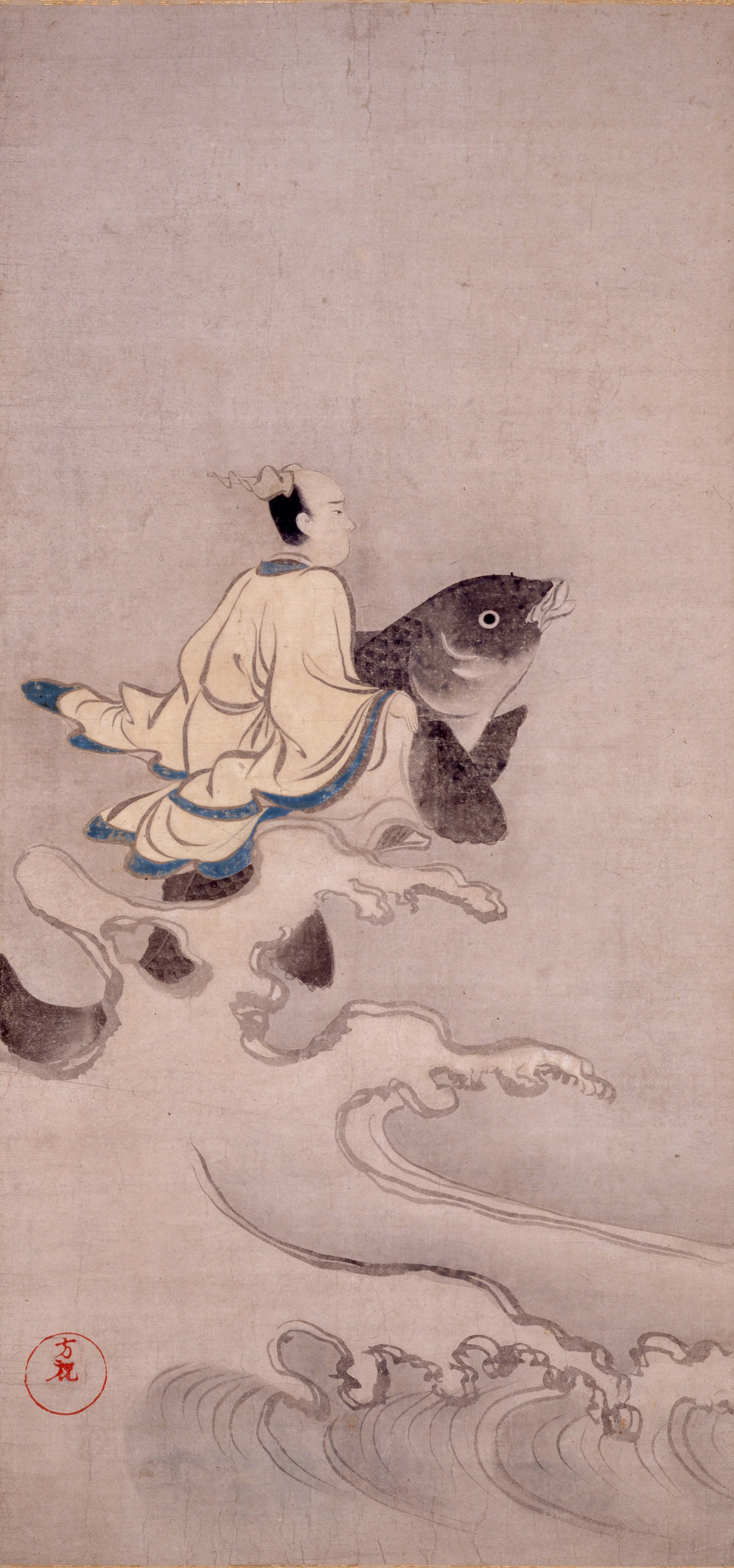
Overview
The Rinpa School is unique in that, unlike other schools such as Kanō and Tosa, the heritage was perpetuated not through familial lines or clan-retainership, but by those who had affinity with the style. It came about in the early Edo period, with Hon’ami Kōetsu and Tawaraya Sōtatsu being forerunners, and it flourished during the years of Genroku (1688 - 1704) with the work by Ogata Kōrin and his brother Kenzan. Toward the end of the Edo period (the late 18th century), artists who admired Kōrin, such as Sakai Hōitsu and Suzuki Kiitsu, endeavored to revive the tradition. Throughout the period, these artists produced many different designs in a variety of genres not only painting on folding screens and hanging scrolls, but also kogei handicrafts such as writing boxes, kimonos, folding fans, portable containers and pottery.
This exhibition showcases the masterpieces of these prominent Rinpa artists, including Calligraphy of Poems from the ‘Shin-Kokin Wakashu’ on Printed Patterned Paper by Hon’ami Kōetsu, Komachi and Old Journal by Ogata Kōrin, Covered Box with a design of plum blossoms by Ogata Kenzan and Wisteria, Lotus and Maple by Sakai Hōitsu. Rediscover the sophisticated finesse of decorative arts that stand the test of time and convey the grace carried by the works of the Rinpa artists.
Highlights
◆1.An overarching perspective on Rinpa art — from Kōetsu and Sōtatsu to Hōitsu
The Rinpa art exemplifies many aspects of Japanese art, such as the depiction of transient scenes of four seasons and refined decorative techniques using gold, silver and other vibrant colors. Ingenious designs that extend to items of practical utensils (kogei) also reflect the conceptional scope of Japanese art. Select items from the museum collection present the variety of Rinpa art intended to be integrated into people’s lives, including Writing Box with a design of a woodcutter by Kōetsu and a fan with a design of Landscape and Jurojin by Kōrin.
◆2. Exquisite paper designs — Kōetsu and Sōtatsu
Kōetsu and Sōtatsu collaborated to create paper on which the former designed patterns in gelatin-based paints with gold and silver, and the latter executed elegant calligraphy. This excellently decorative paper is considered to be one of the early examples of Rinpa art. A collection of 10 items are on display, representing this paper art by Kōetsu and Sōtatsu in various forms, such as paste ups and art board paper. The exhibits include Calligraphy of Poems from the ‘Shin-Kokin Wakashu’ on Paper Decorated with Deer and Calligraphy of Poems from the ‘Shin-Kokin Wakashu’ on Printed Patterned Paper.
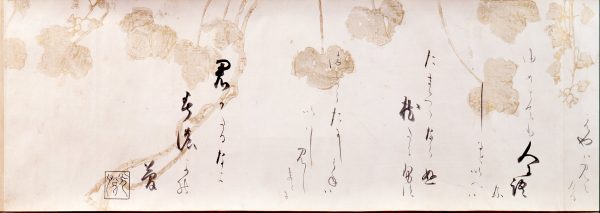 CALLIGRAPHY OF POEMS from the ShinKokin-wakashū on Paper Decorated with Printed Drawings
CALLIGRAPHY OF POEMS from the ShinKokin-wakashū on Paper Decorated with Printed Drawings
Hon’ami Kōetsu (1558–1637)
Momoyama–Edo period, 17th c.
◆3. Perpetuated technique — Tarashikomi
Sōtatsu invented a painting technique, which is today known as tarashikomi. Different shades of black ink are applied before the previous stroke dries to produce various effects, such as gradation and blurring. The varying intensity of the ink color expresses highlights and shadows, giving enriched volume and texture to the drawing. This technique was inherited by succeeding Rinpa artists such as Kōrin and Hōitsu. The exhibition offers a unique opportunity to study this technique executed differently by various artists in terms of the ways of application and brushwork.
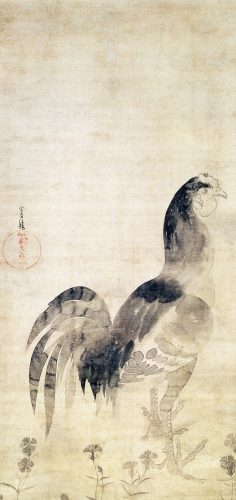 ROOSTER
ROOSTER
Tawaraya Sōtatsu
Edo period, 17th c.
The Artists
1. Hon’ami Kōetsu (1558 - 1637)
Born in Kyoto into a family trading in sword valuation and sharpening, Kōetsu grew up in a culturally-rich environment to excel at writing, pottery and lacquer work. He is also recognized as one of the three greatest calligraphers of the period of Kan’ei (early 17th century) and a founding authority of the Kōetsu-style calligraphy. He loved the Noh theater so much that he published an ‘utahon’ in woodblock print in elegant, decorative binding. In 1615, he was accorded a land in Takagamine, north of Imperial Kyoto, by the Tokugawa shogunate, where he moved in with his family and wealthy townspeople. It was around this time that he started devoting himself to Raku ware. He was also creative in urushi art, using lead and mother-of-pearl in his unique bold fashion, which became later known as Kōetsu maki-e.
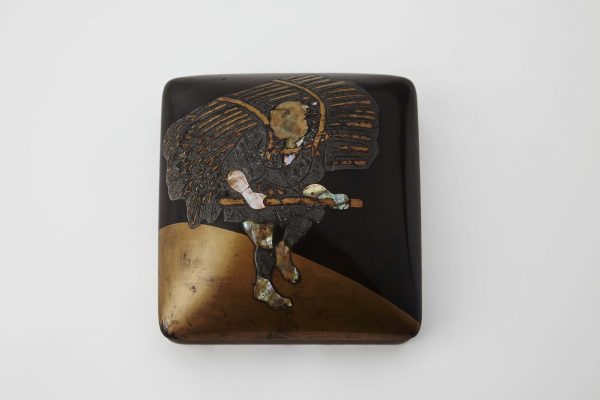 WRITING BOX
WRITING BOX
Attributed to Hon’ami Kōetsu (1558–1637)
Momoyama–Edo period, 17th c.
Important Cultural Property
2. Tawaraya Sōtatsu (unknown - c. 1640)
It is believed that Sōtatsu was a proprietor of the Tawaraya, an art workshop and gallery handling designs for paper fans, decorative paper and folding screens. In early days, he produced many small articles of dessins in gold and silver dyes. Later, he was engaged more in large-scale projects of ink wash painting and mural painting. Sōtatu developed his unique style employing the mogu (drawing without using outlines) and tarashikomi techniques. He introduced and developed new techniques and themes in the genre of yamato-e painting, which later became the base of styles attributed to the Rinpa art.
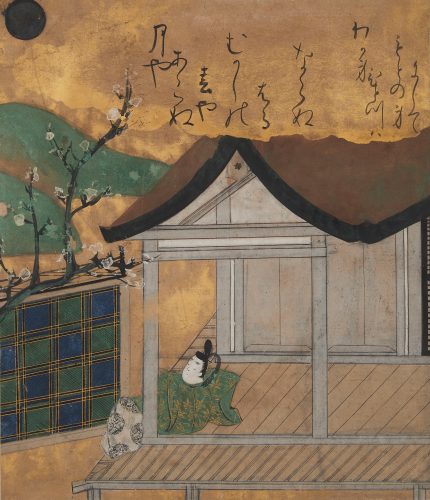 STORY ABOUT NISHI-NO-TAI
STORY ABOUT NISHI-NO-TAI
Scene from the Tales of Ise
Attributed to Tawaraya Sōtatsu
Edo period, 17th c.
3. Ogata Kōrin (1658 - 1716)
Kōrin was born into a Kyoto-based family of kimono textile merchant, Ogata Sōken, as his second son. During his youth, Kōrin was introduced to many forms of art, including the textile designs as well as the Noh theater, calligraphy and painting, which his affluent familial background permitted. He was also trained in the Kanō School painting and familiar with works of Kōetsu and Sōtatsu through some of them held by the family. This evidently inspired him to develop his own style in designing. Kōrin was also proactive in craftworks; designs for his brother Kenzan’s pottery as well as kimono and maki-e are a few examples. His stylistic designs of waves, plum blossoms and other motifs became iconic and popular among people.
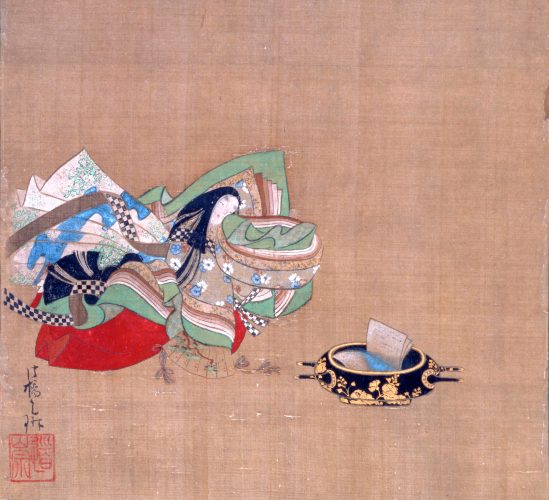 THE POETESS ONO-NO-KOMACHI WASHING THE COPY BOOK
THE POETESS ONO-NO-KOMACHI WASHING THE COPY BOOK
Ogata Kōrin (1658–1716)
Edo period, 18th c.
4. Ogata Kenzan (1663 - 1743)
Kenzan is a third son of Ogata Sōken and a younger brother of Kōrin. At the age of 27, he left home and studied pottery under Nonomura Ninsei, an acclaimed Kyo ware potter. In 1699, he opened his own kiln named Kenzan in Narutaki-izumitani in Kyoto. He created many articles with designs and poems. He was also experimental in creating pottery modeled on porcelains imported from China and Holland. In 1712, he moved his base to a more central area, where he produced many sets of services for a kaiseki cuisine. Later, Kenzan established himself in Edo and remained active in creating tasteful art works, including some paintings.
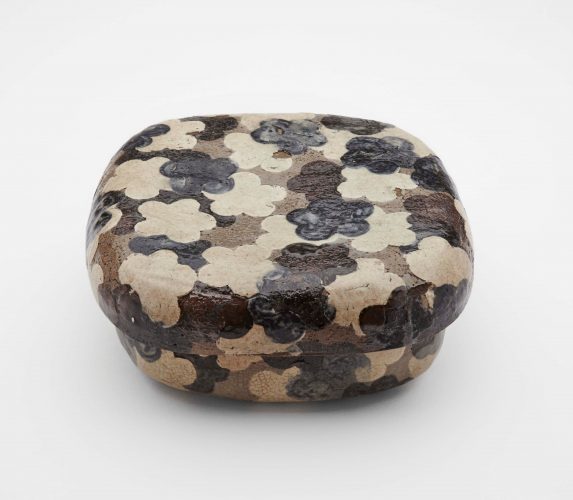 銹絵染付梅花散文蓋物 尾形乾山 江戸時代 18 世紀
銹絵染付梅花散文蓋物 尾形乾山 江戸時代 18 世紀
5. Sakai Hōitsu (1761 - 1829)
Sakai Hōitsu was born in Edo as a second son of Sakai Tadamochi, a daimyo lord of Himeji. In his youth, Hōitsu learned many styles of painting such as the Kano School, ukiyo-e, the Maruyama School and the Tosa School. Having entered into a life as a Buddhist at the age of 37, he developed great affinity with Kōrin’s works, which led him to hold a centennial exhibition dedicated to the artist in Edo in 1815. He was adept at expressing seasonal and climatic changes in the natural domain truthfully. His style grew into what is known today as Edo Rinpa. While noted in painting of natural motifs, Hōitsu also explored in a variety of themes, including genre paintings, Buddhism paintings, auspicious topics and illustrations of poems.
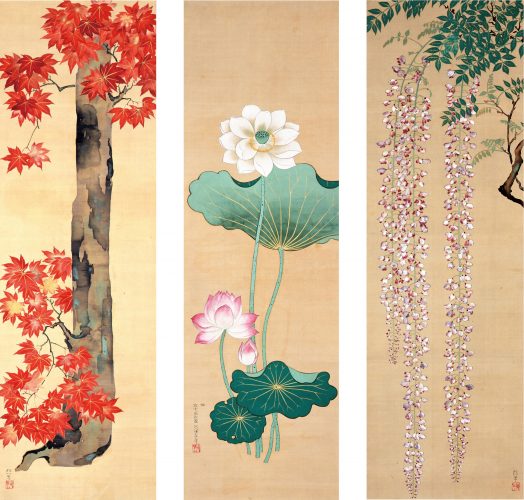 藤蓮楓図 酒井抱一 江戸時代 19 世紀
藤蓮楓図 酒井抱一 江戸時代 19 世紀
